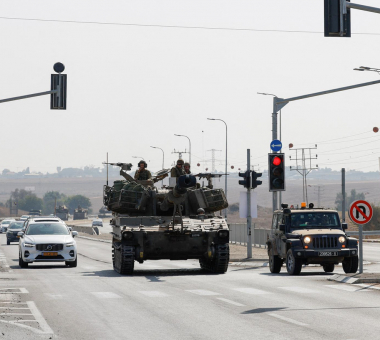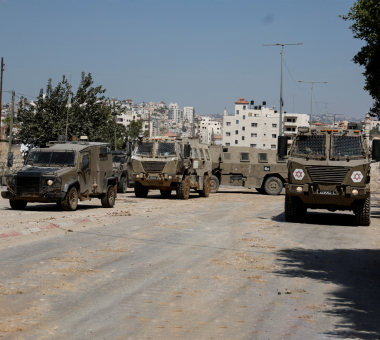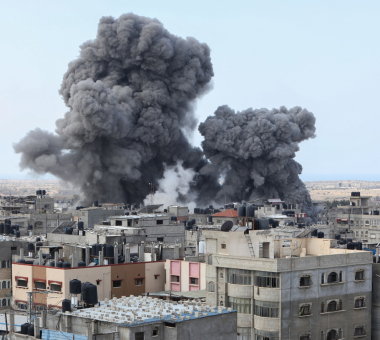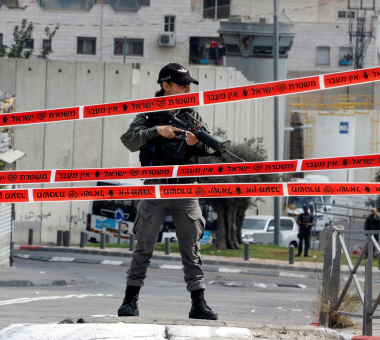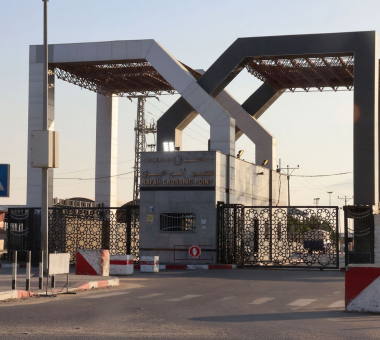The war in the Gaza Strip enters its eighth month amidst a series of changes, both on the ground, with Israel beginning its military operations in the city of Rafah and taking control of the only crossing between the Strip and the outside world on May 7, and in the breakdown of multi-party negotiations in early May to stop the war, which were relaunched on May 31 when U.S. President Joe Biden outlined a three-stage proposal on that he described as a “roadmap to a lasting ceasefire and the release of all hostages.”
In reality, the war and its developments are becoming increasingly complex, especially in light of the losses suffered by the parties involved, which must be considered when studying the possible future trajectories of the conflict.
Before the Escalation in Rafah
On May 6, the day Hamas announced its acceptance of a ceasefire proposal presented by Egyptian and Qatari mediators, Israel launched its military operation against Rafah. A delegation from Hamas was supposed to travel to Cairo on May 7 to finalize the agreement. However, the ceasefire implementation was thwarted when Israeli Prime Minister Benjamin Netanyahu rejected it, deeming it “far from Israel’s fundamental demands.” Additionally, Netanyahu’s allies in the coalition government, particularly the leaders of extremist parties, threatened to withdraw from the government if the draft agreement was accepted and Rafah was not invaded. This explains the rapid decision to launch the military operation in Rafah and seize control of its crossing on May 7.
Since that date, the war has taken a highly accelerated and escalated path, both militarily and politically, appearing as a race against the limited available time to achieve as many gains as possible while somewhat reducing the discussion about the losses incurred by both sides if the war were to stop. In the Israeli case, the government seeks to achieve a swift invasion of the city of Rafah before the international community begins to intensify its calls to stop the war, there is a rise in protests demanding a deal to release detainees, and an escalation of opposition rhetoric.
The Israeli military operations in Rafah have been characterized by their intensity, despite the limited number of troops involved. According to U.S. National Security Council Coordinator for Strategic Communications John Kirby, “We have not yet seen a large-scale military operation in Rafah involving the movement of thousands of ground troops into Rafah” compared to their size in previous invasions of cities in the Gaza Strip. Additionally, the military operations have expanded to include various areas of the Strip, including the Jabalia Camp of Palestinian refugees.
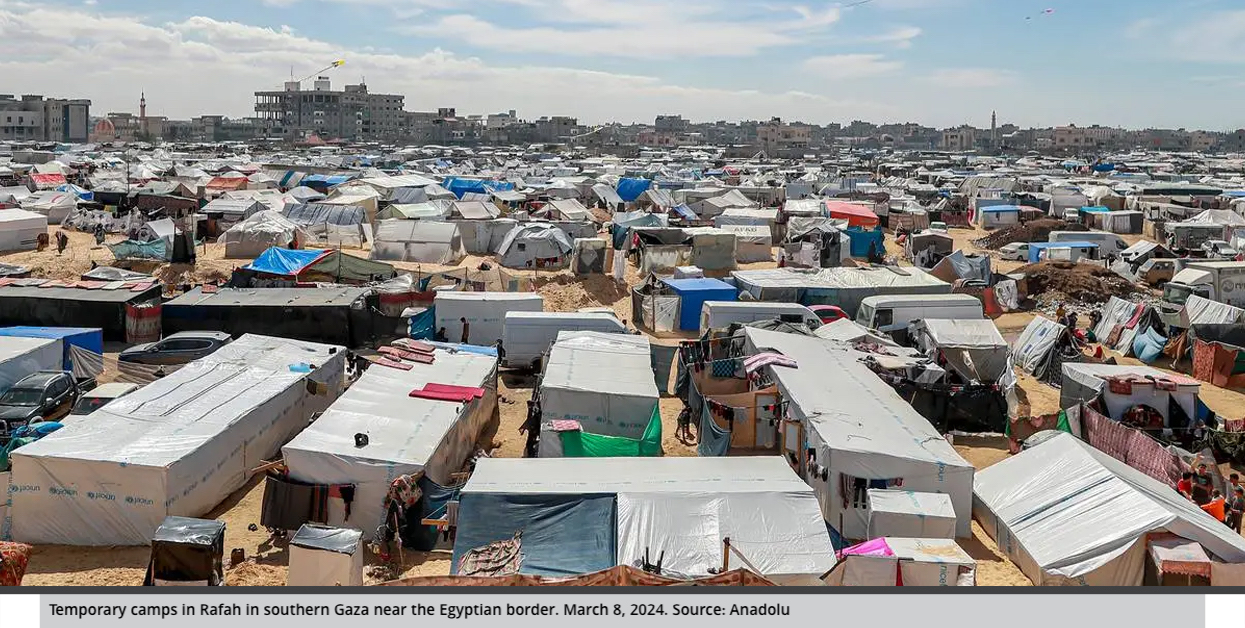
In contrast, Hamas has sought to focus on high-profile operations, seemingly to demonstrate its retained capabilities in facing Israel after months of war. For the first time since the beginning of the conflict, Hamas announced on May 25 that it had captured Israeli soldiers during battles in Jabalia Camp, a claim denied by the Israeli military. Additionally, the movement launched rockets towards Tel Aviv and its suburbs on May 26. Hamas aims to present Israel with a model of its activity in the aftermath of the war, intending to complicate the situation for Israel and the United States regarding their plans for the future management of the Gaza Strip.
War Parties Situation After Eight Months of its Breakout
The recent military escalation reflects the overall condition of the war parties, the actors involved, and the direct theaters of conflict. Despite attempts by the parties to seek achievements and showcase them, they have suffered political, military, and field losses over the past eight months. These losses include:
Gaza Strip
The Israeli army has gained control over approximately 40% of the total area of the Gaza Strip, which amounts to 141 square miles. The army’s engineering corps is working on redesigning the geographical and demographic landmarks of the Strip to serve Israel’s future vision for it. This involves separating the northern part of the Strip from its central and southern regions with a military road that is almost two miles wide.
Additionally, they are separating the eastern part of the Strip from the western part by constructing Road 749 and establishing a buffer security zone with a width ranging from a third of a mile to a mile. Furthermore, Israel has full control over the Rafah crossing and the “Philadelphi Route,” a strip of land that stretches along the entire border between the Gaza Strip and Egypt.
In addition to reclaiming nearly half of the Gaza Strip’s territory, the infrastructure has suffered destruction either partially or completely. This includes roads, universities, schools, hospitals, institutions, water, electricity, sewage systems, and agricultural areas. According to estimates by the World Bank and the Palestinian Ministry of Economy, damages to the infrastructure are estimated at around $18.5 billion, equivalent to 97% of the total Palestinian GDP in 2022.
In addition to the infrastructure and economic losses, there have been significant human losses, with more than 36,000 people killed and more than 100,000 injured. Permanent displacement is also prevalent, alongside the spread of diseases, food shortages and continuous warnings of famine by international agencies. Several international entities, including the United States, have described the situation in the Gaza Strip as “unbearable” and “beyond human endurance.”
Hamas
Hamas has lost several of its bases, tunnels network, and official governmental headquarters. It also lost control over the Palestinian side of the Rafah crossing. While accurate official statistics regarding its losses, particularly in terms of the number of its fighters, are not available, many of its units have been dismantled. Moreover, its leadership structure has been disrupted in various areas of the Strip.
Some of its prominent political and military leaders in the Gaza Strip and Lebanon have been killed, including Salah al-Arouri, the deputy leader of Hamas and a founding commander of its military wing, the Al-Qassam Brigades; Jamila Shanti, the first female political bureau member of Hamas; Ayman Nofal, a member of the Al-Qassam Brigades's General Military Council and commander of the Central Gaza Brigade; Fawzi Abu Mugh; Ahmed al-Ghandour, a senior Al-Qassam Brigades member in charge of military operations in Gaza’s northern section; Hamas Minister of Economy Jawad Abu Shamal; and Abu Hamam al-Mizini.
The losses suffered by the movement and its leadership structure undermine Hamas’s ability to manage the Gaza Strip once Israeli forces withdraw and in the absence of a Palestinian alternative. Additionally, the movement will not be capable of governing the future of the Strip and addressing key issues, foremost among them reconstruction, without making significant concessions. These concessions may involve changes in its rhetoric, leadership structure, or stance towards Israel.
In addition, Hamas attacks in areas surrounding the Gaza Strip have created a sense of distrust between Hamas and Arab mediators, particularly with Qatar, to the extent that observers have begun to question Qatar’s ability to continue in its efforts to contain the movement. There are growing indications that Qatar is reconsidering its relationship with Hamas, especially considering the possibility of relocating the movement’s political office from Qatar to a third destination, depending on the course of the war and negotiations, as well as the future of the Strip and the limits of Hamas’s role in that future.
In addition, the war has closely tied Hamas to the “Axis of Resistance” led by Iran. Data reveals direct and indirect coordination between Hamas and other parties within the Axis, especially Iran. This not only affects Hamas’s image among Arab communities but also within Gaza itself, where significant segments of the population reject Iranian policies and stances towards Arab countries.
In addition, the losses were not limited to Hamas alone. They also affected other parties within the Axis of Resistance, particularly Iran and Hezbollah. Tehran lost several military leaders in Israeli strikes in Syria and Hezbollah lost a number of its field commanders. Reports indicate that Hezbollah has lost nearly 300 fighters since the escalation began. More importantly, Hezbollah is moving towards a form of escalation beyond the usual rules of engagement.
Israel announced on May 8 its latest count of military casualties since the war began: 614 officers and soldiers killed, including 267 killed in the ground operation inside the Gaza Strip. Additionally, 3,361 soldiers were injured, including 520 with serious injuries. Around 1,200 Israelis were killed in faction attacks inside the Gaza envelope on October 7, 2023, and about 257 of them were captured, with 133 remaining hostages, according to Israeli sources.
Furthermore, approximately 330,000 Israelis were evacuated from their homes in the south and north. Israel’s economic losses amounted to $5.2 billion in settlements around Gaza and $1.35 billion in northern settlements. Monthly losses in agriculture, tourism, and trade sectors were around $540 million, $1.1 billion, and $1.62 billion, respectively. This led to a budget deficit of $7.1 billion (6.2% of the budget), according to the Israeli Ministry of Finance. The daily cost of the war for Israel since its outbreak until late December 2023 was $270 million, which decreased during 2024 to $94 million per day, according to the Israeli Ministry of Security.
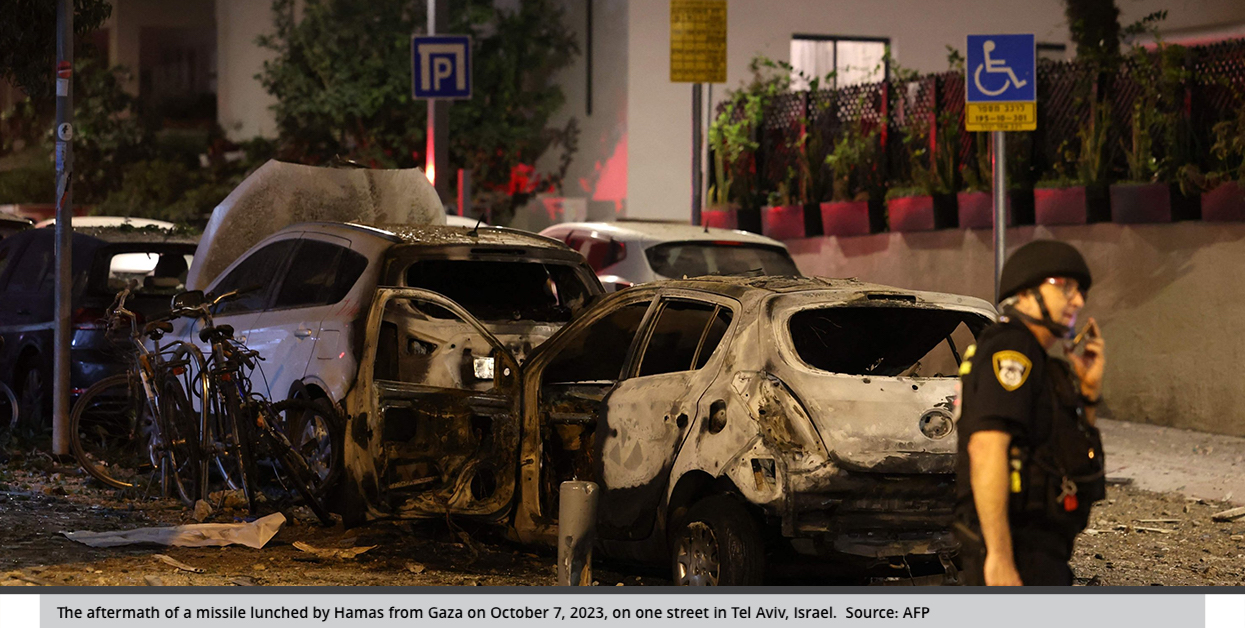
Israeli losses were also significant at the political level, particularly in its international reputation and evolving international positions due to the war. This was especially highlighted after the chief prosecutor of the International Criminal Court announced his intention on May 20 to request arrest warrants against Israeli Prime Minister Benjamin Netanyahu and Defense Minister Yoav Galant for alleged crimes against humanity. Additionally, the International Court of Justice (ICJ) decided on May 24 to demand that Israel immediately cease its attack on Rafah.
Moreover, there was a shift in the positions of both the United States and Europe regarding the war in the Gaza Strip. The European Union expressed its intention to discuss imposing sanctions on Israel if it did not comply with ICJ’s edict, which could include suspending the EU-Israel Association Agreement.
The crisis within Israel has deepened, and it is likely to escalate in light of the debates among its factions regarding the proposed timing for a ceasefire, as outlined by Biden in early June. The plan consists of three stages aimed at achieving a sustainable cessation of hostilities, which the extremist factions in Israel’s governing coalition have announced their rejection of, going as far as threatening to withdraw from the government.
Furthermore, there is a crisis among members of Israel’s war cabinet, with expectations that Defense Minister Benny Gantz will carry out his threat to resign on June 8. Amidst these developments, there are calls from the opposition for early parliamentary elections. On May 29, an agreement was announced between opposition leader Yair Lapid, Yisrael Beiteinu Party leader Avigdor Lieberman, and National Union Party leader Gideon Sa’ar on an action plan to topple the current government. They called on Gantz to resign and join them.
War Trajectories in Light of Losses Incurred by Both Sides
Aside from considering the achievements made in the perspectives of the warring parties, there’s a fundamental question. Are the losses incurred by the war so far a factor in initiating a ceasefire and has putting an end to these losses become a primary objective alongside the war’s goals themselves? From this question, we can review the future trajectories of the war eight months after its outbreak.
First Trajectory
Biden’s speech proposing a ceasefire could serve as an exit strategy for the warring parties, providing an opportunity for them to step back. The recent escalation might be understood as a prelude to a ceasefire, allowing both parties to claim victory and giving them acceptable space to make concessions without damaging their image among their constituents and allies. Biden’s proposal may crystallize into a long-term truce, potentially evolving into negotiations for a sustainable ceasefire.
This possibility is reinforced by statements from Israel Defense Forces (IDF) Chief of Staff Lt. Col. Herzi Halevi, said “80 percent of the military objectives of the war have been achieved, and what remains will take time,” and former IDF chief Gadi Eisenkot, an observing member of Israel’s war cabinet, who reportedly told the Israeli Foreign Affairs and Security Committee that since “Hamas renewed its forces” what needs to be done now
Second Trajectory
If ceasefire negotiations stall, the war in Gaza may continue with a more tactical approach, especially now that Israel has complete control over the Rafah crossing and the Egyptian-Palestinian border strip. Israel’s tightened control over northern Gaza, which gives it field control leadership over the entire sector, further reinforces this possibility.
On May 29, the head of Israel’s National Security Council, Tzachi Hanegbi, a member of Netanyahu’s Likud Party, said “The fighting in Gaza will continue for at least another seven months.” This indicates that both sides may engage in long-term battles to drain each other’s capabilities. For Gaza, this means an increase in humanitarian costs and the continuation of an infrastructure absence; for Israel, it entails facing new forms of hybrid warfare, whether through ambushes, kidnappings, or sniper activities.
Third Trajectory
Continued losses and risks associated with the ongoing war may lead to fundamental changes within Israel that include early elections and the dissolution of the war cabinet. It is expected that the opposition will win the early elections, according to the latest opinion polls, increasing the chances of forming a government more responsive to the U.S. administration’s vision of halting the war and achieving its remaining objectives diplomatically, which will allow Biden to focus on the upcoming November presidential election and redirect American strategic efforts toward the ongoing escalation of Russian-occupied Ukrainian territories.
Keep in touch
In-depth analyses delivered weekly.








